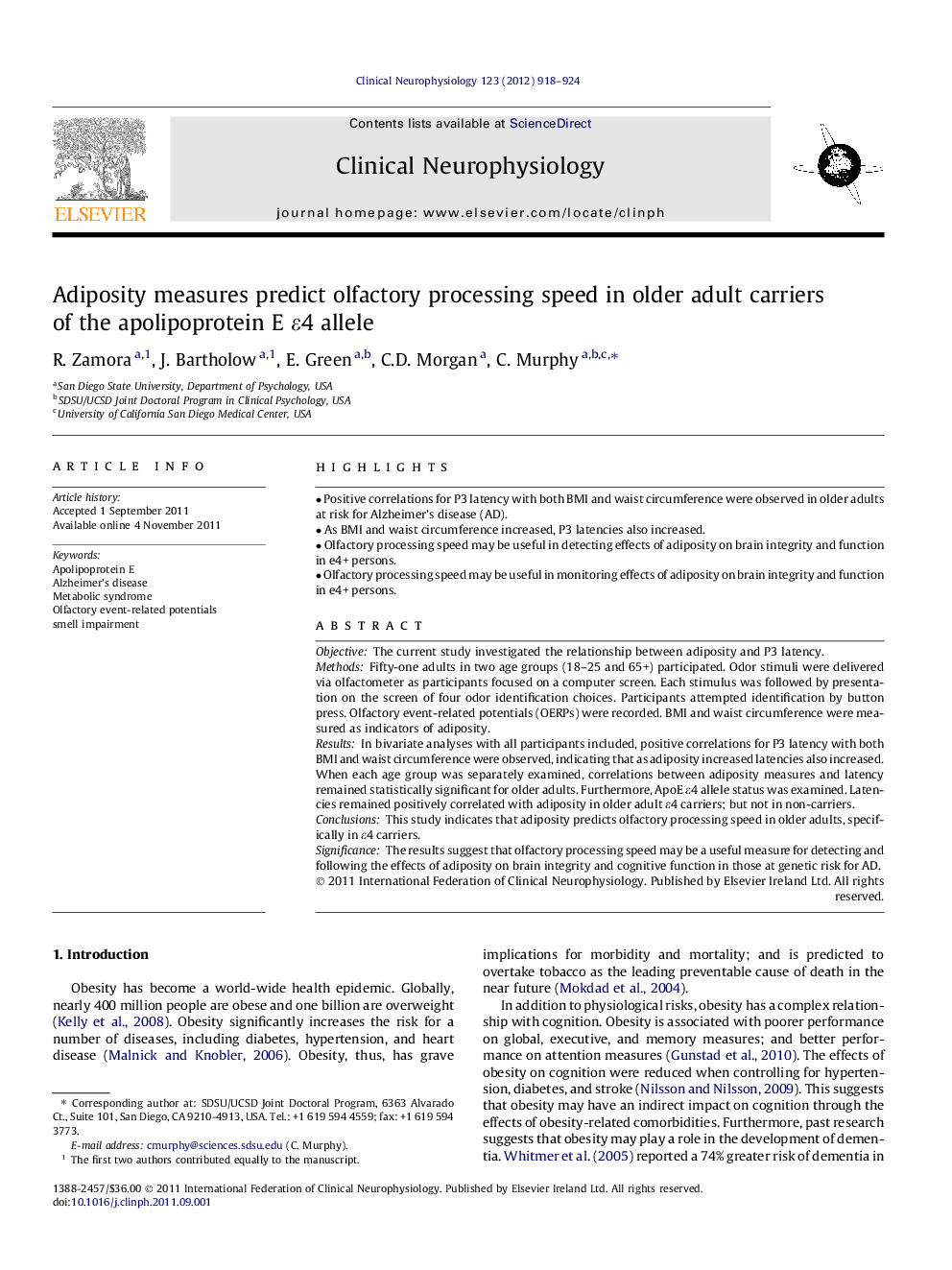| Article ID | Journal | Published Year | Pages | File Type |
|---|---|---|---|---|
| 3045285 | Clinical Neurophysiology | 2012 | 7 Pages |
ObjectiveThe current study investigated the relationship between adiposity and P3 latency.MethodsFifty-one adults in two age groups (18–25 and 65+) participated. Odor stimuli were delivered via olfactometer as participants focused on a computer screen. Each stimulus was followed by presentation on the screen of four odor identification choices. Participants attempted identification by button press. Olfactory event-related potentials (OERPs) were recorded. BMI and waist circumference were measured as indicators of adiposity.ResultsIn bivariate analyses with all participants included, positive correlations for P3 latency with both BMI and waist circumference were observed, indicating that as adiposity increased latencies also increased. When each age group was separately examined, correlations between adiposity measures and latency remained statistically significant for older adults. Furthermore, ApoE ε4 allele status was examined. Latencies remained positively correlated with adiposity in older adult ε4 carriers; but not in non-carriers.ConclusionsThis study indicates that adiposity predicts olfactory processing speed in older adults, specifically in ε4 carriers.SignificanceThe results suggest that olfactory processing speed may be a useful measure for detecting and following the effects of adiposity on brain integrity and cognitive function in those at genetic risk for AD.
► Positive correlations for P3 latency with both BMI and waist circumference were observed in older adults at risk for Alzheimer’s disease (AD). ► As BMI and waist circumference increased, P3 latencies also increased. ► Olfactory processing speed may be useful in detecting effects of adiposity on brain integrity and function in e4+ persons. ► Olfactory processing speed may be useful in monitoring effects of adiposity on brain integrity and function in e4+ persons.
